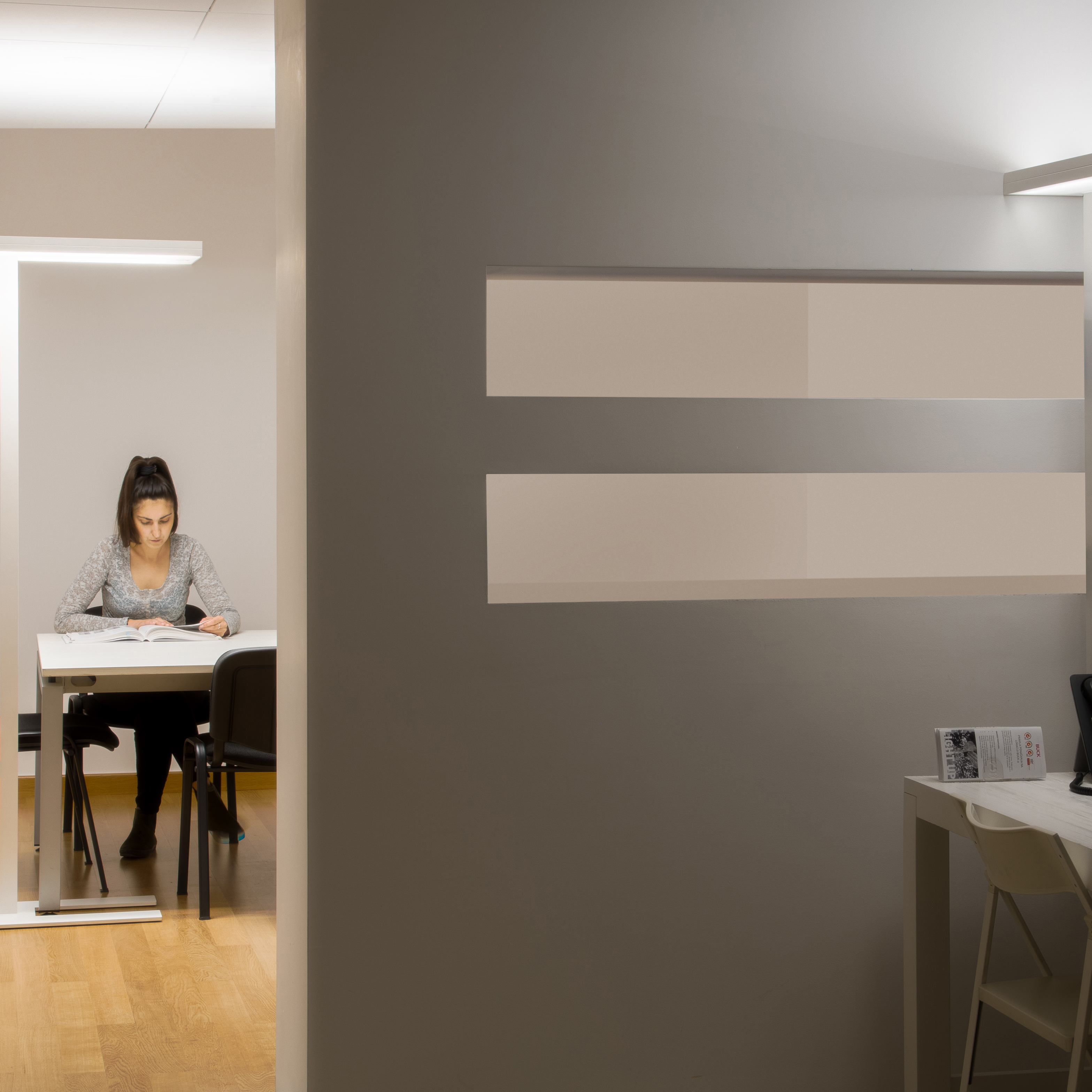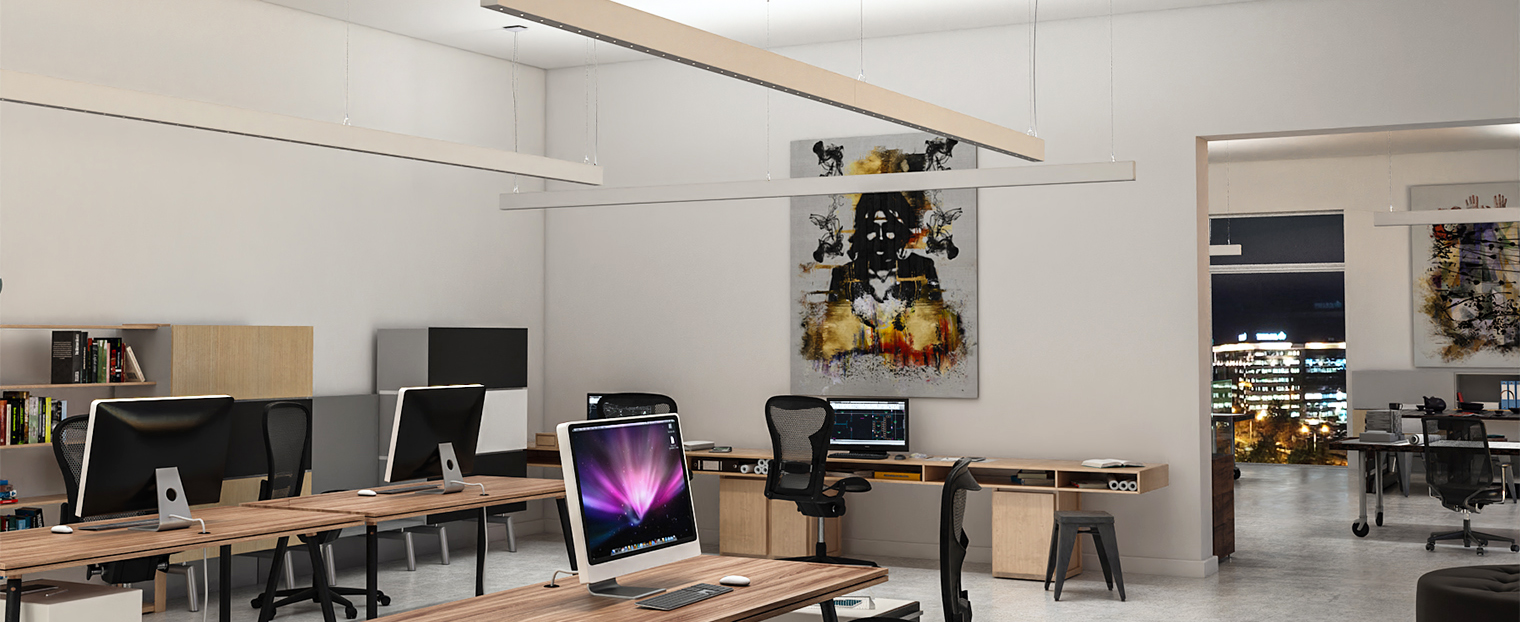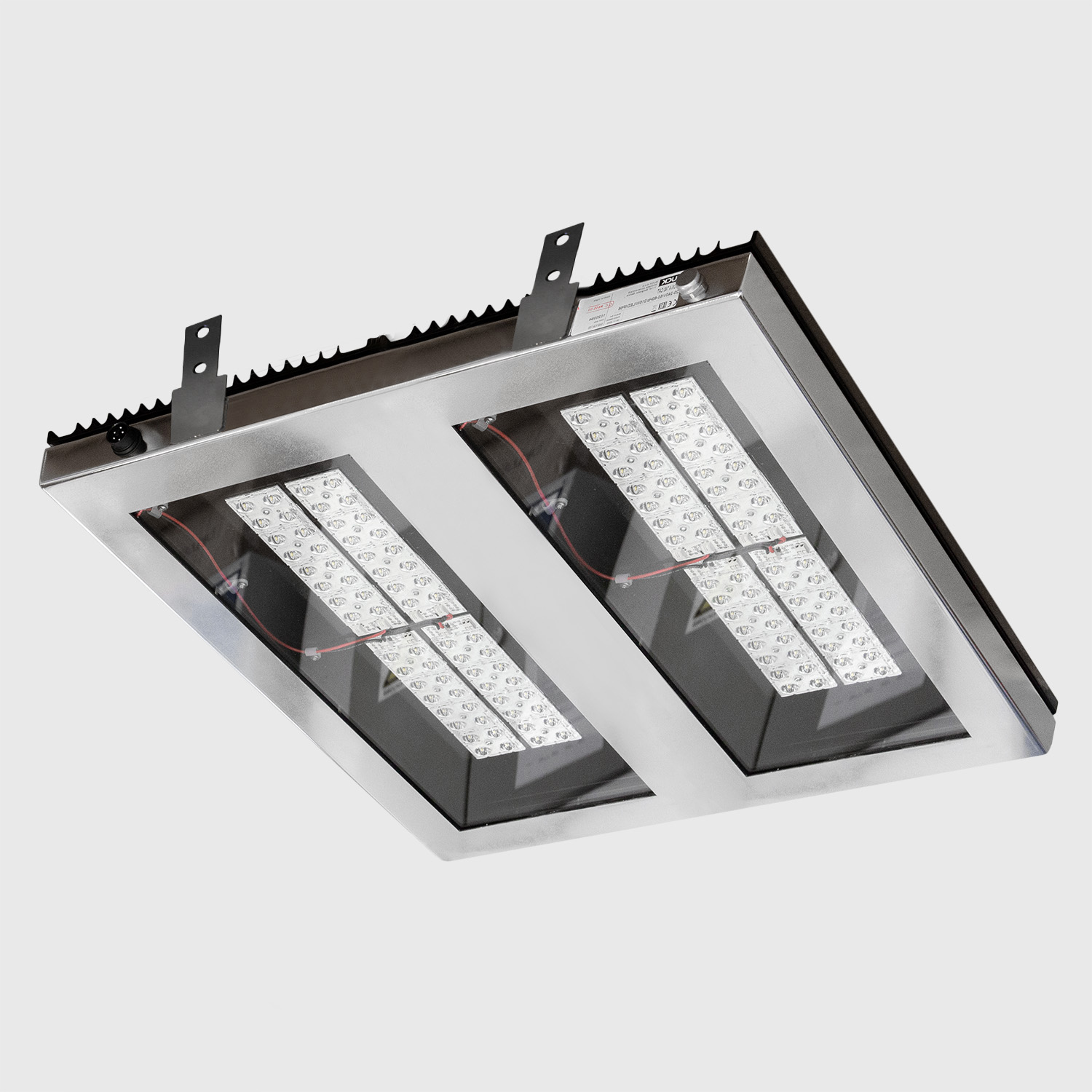In every design project, lighting plays an important role because its effects can directly affect the psycho-physical state of employees, so this aspect shouldn’t be neglected. Although the overall visual impression doesn’t depend only on the lighting of the ambience, it is a tool that designers use to change an existing office space or create a new one. Low-quality lighting can harm eyesight, causing fatigue, discomfort, migraines, and insomnia to employees, which consequently affects the overall productivity of the company. While lack of light is at the root of the problem in most cases, inadequate, intense lighting can make things worse. The main requirement in choosing lighting for office space is to bring the artificial light as close to daylight as possible. LED lamps provide the greatest opportunities to achieve this goal. The advantages of using this type of lighting are numerous, and among the most recent is the ability to control the spectral composition of light, which allows you to coordinate the colour of artificial lighting with changes in the colour of daylight.
Colour temperature of lighting and employee productivity
With the appearance of LED lighting, the ability to regulate the colour temperature of the light has also appeared. When there is no daylight in a room, both during the day and at night, the feeling of subjective comfort or discomfort in the workplace can largely depend on the quality of the lighting and the colour temperature of the light it emits. The selection of colour temperature in an office space is determined solely from a functional point of view, and not from a design point of view.
Warm lighting temperatures lead the body to relaxation and even sleepiness, because of the increase in the production of the hormone melatonin, and for this reason, such shades of light can be used in waiting rooms, relaxation areas, or kitchens.
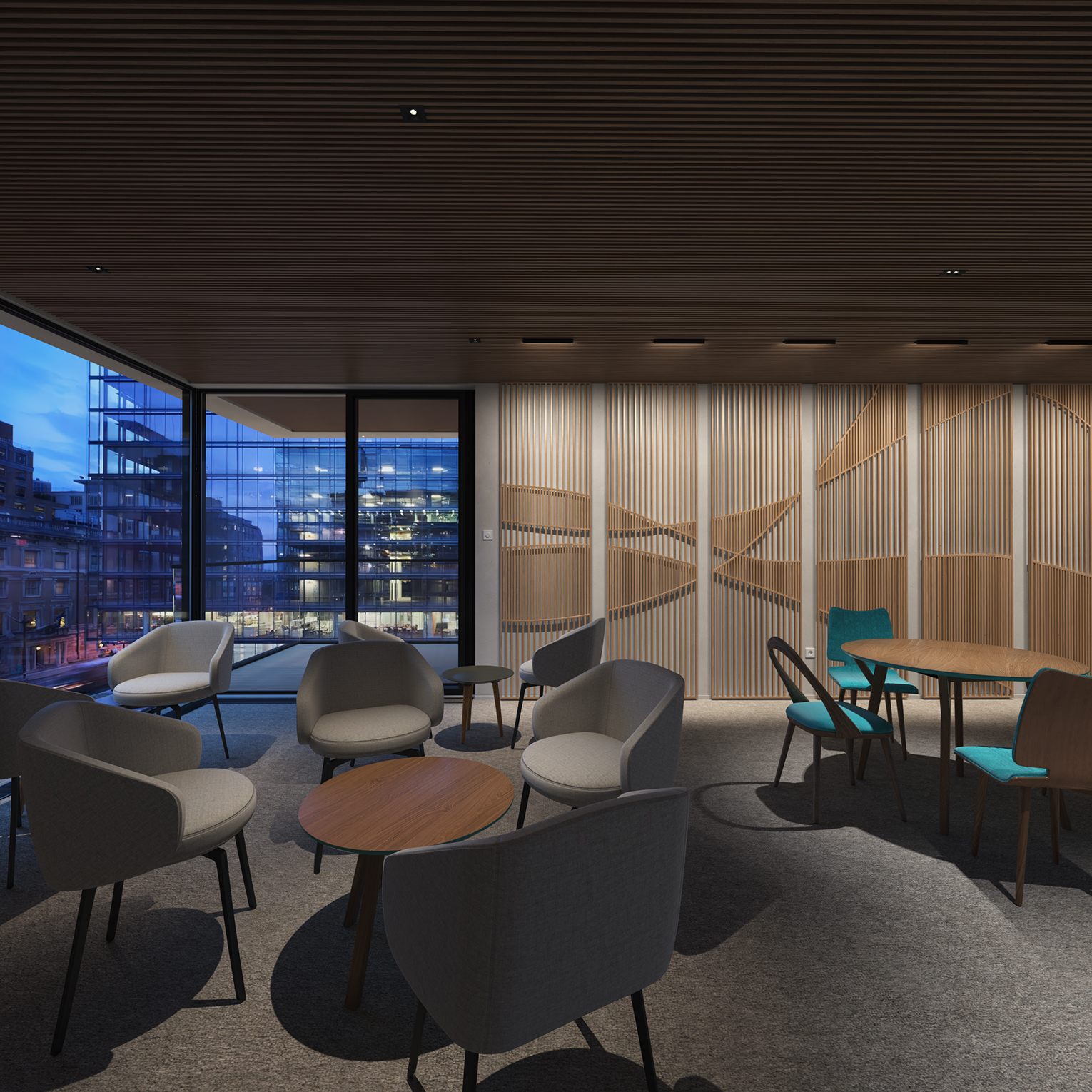
On the other hand, the cold temperature of the lighting improves concentration and perception, but it will gradually stress the nervous system, so its use isn’t recommended in offices where workers spend most of the day, but only in meeting rooms or areas where certain projects and ideas are considered.
However, when we talk about workspaces where the staff spend most of their day, it is necessary to illuminate them by the light temperature closest to daylight to avoid negatively affecting their activity and vigilance. As you know, the intensity and temperature of daylight can vary at different times of the day, so the best solution would be to equip the office space with the innovative concept of Human Centric Lighting if it is possible. This lighting concept imitates the natural cycle of daylight and the circadian rhythm of employees by modifying the intensity and colour of the lighting. Taking care of the health of their employees and at the same time the overall productivity of the workforce, modern companies have started to equip their premises with intelligent lighting systems. Our innovative luminaires, such as the ARIA SMART HCL freestanding luminaire, with its variable light intensity and colour and multi-sensor for presence detection, are following this trend and saving energy.
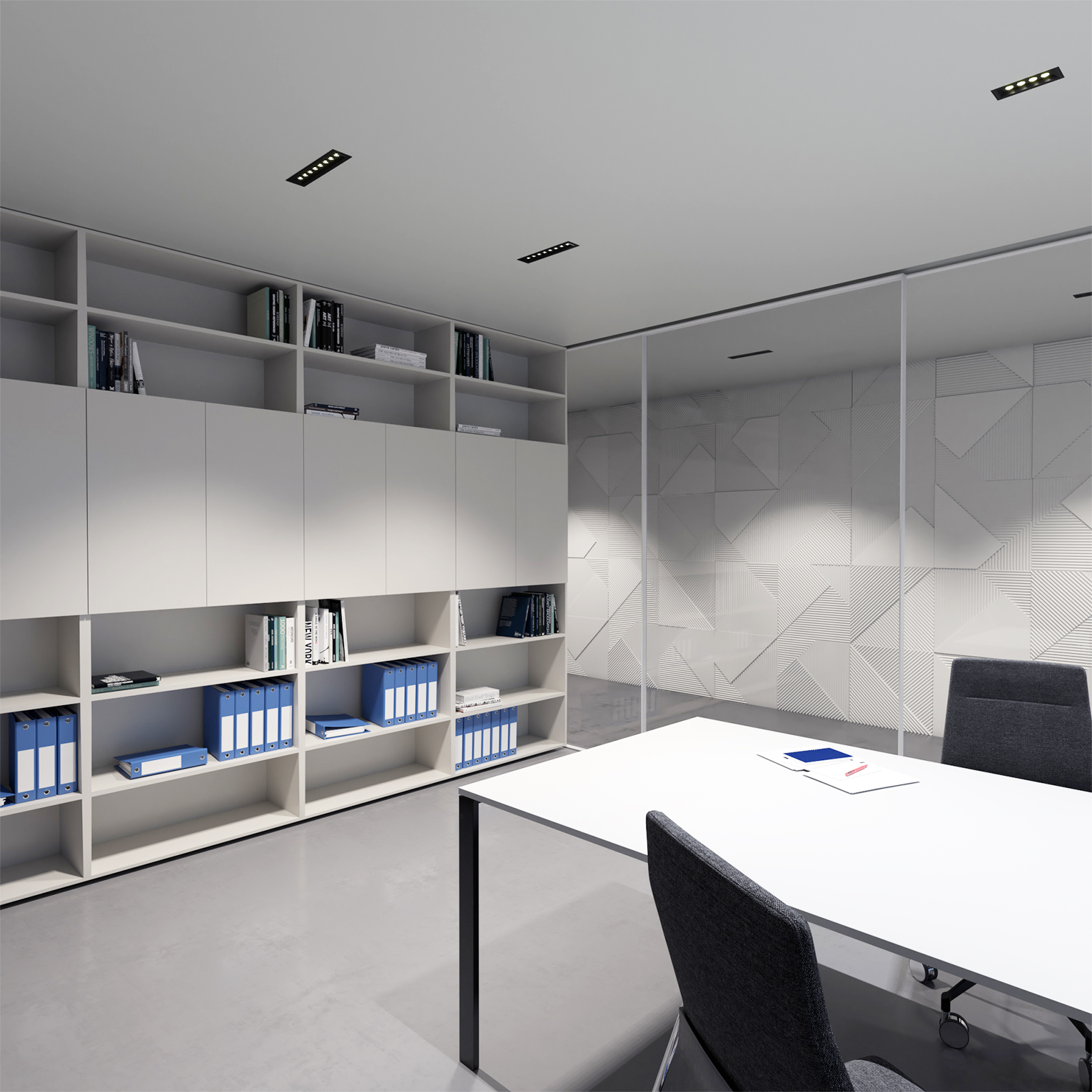
If it is not possible to equip office spaces with adjustable lighting, the optimal temperature for lighting these work areas is a neutral white colour.
Large variations in this lighting temperature can significantly reduce employee performance.
Designing an office space by using lighting and colours
Lighting is the most powerful tool for creating the desired atmosphere and mood, and when it is combined with carefully considered colour schemes, it can help to achieve an additional positive effect in the work environment. In designing lighting, attention must be paid to how a particular temperature of lighting colour can affect the changing colour of interior walls as well as the overall visual experience within the work unit. Warm colours in the interior combined with cold light can never look harmonious, just as cold colours in the interior combined with warm light. On the other hand, the darker the walls of the office space are, the smaller the room looks. To visually expand the space, you need to use lighter tones.
The white walls combined with blue lighting can significantly contribute to the visual enlargement of the space and fill the room with “air. However, using only white paint in an office creates an impression of featurelessness and coldness. It is recommended to use two primary colours in the design of open space work surfaces. Therefore, if we choose white as the primary colour in our space, it is desirable to add one or two more shades of another colour, including the colour of the furniture. (Küller, 2006, P.49)
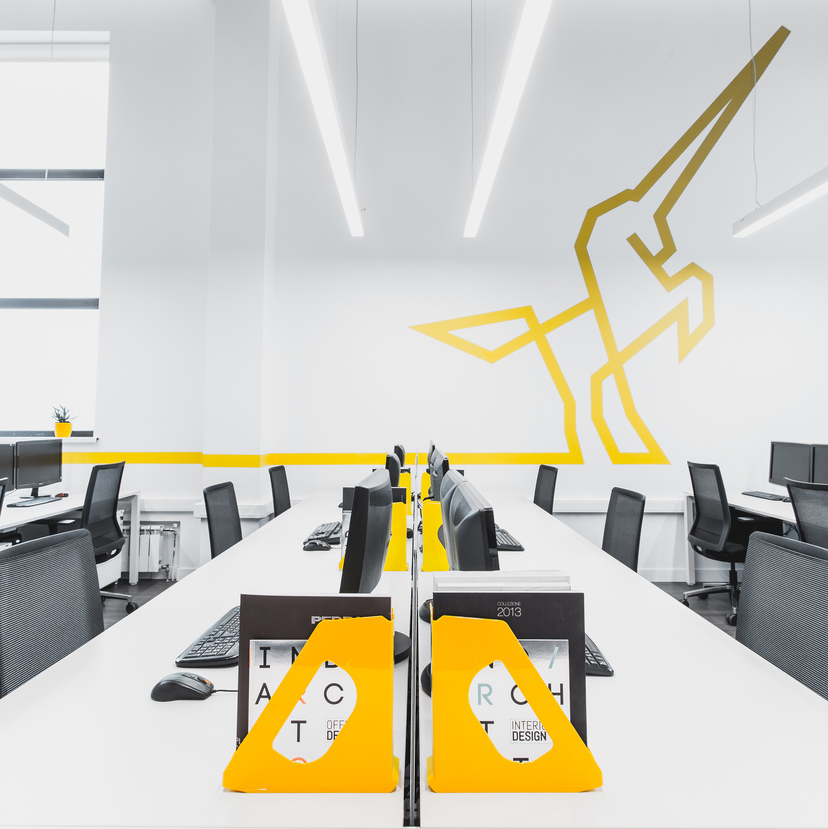
In designing workspaces, it is very important to consider the effect of certain colours on the psychological aspect of employees and how they can be combined with lighting, in terms of its intensity and the warm and cold spectrum. A whole branch of science called “colour psychology” studies the effect of colour on human psychology, and if you use the wrong combination of lighting and colours, you can get completely wrong effects.
Gray, despite its neutrality, can contribute to a condition of boredom and cause a loss of interest and motivation. According to psychologists, black, dark blue, and dark purple colours aren’t the best options for the office space, as they can cause a state of depression among employees. In addition, increasing the intensity of artificial light in such rooms won’t bring many benefits, and on the other hand, will lead to high energy consumption.
It is proven that bright colours irritate the nervous system, which makes a person quickly get tired, and in combination with too intense lighting, they can also cause headaches. For this reason, it is necessary to choose halftones, which, on the contrary, increase the motivation and overall efficiency of workers.
Studies conducted by NASA, which were later used as a basis for other studies on the psychological effects of colour on people in enclosed spaces, investigated the effects of white, red, and pastel blue-green colours. According to the results of this experiment, among the three options mentioned, an office painted solely in white had the lowest level of productivity. The other option, bright red, was characterized in the reports as a colour that creates a visually uncomfortable and limited environment among employees and doesn’t bring much productivity. A third option confirmed NASA’s assumptions that a room painted a pastel shade of blue-green would increase employee productivity, as well as create a sense of comfort when being in it.
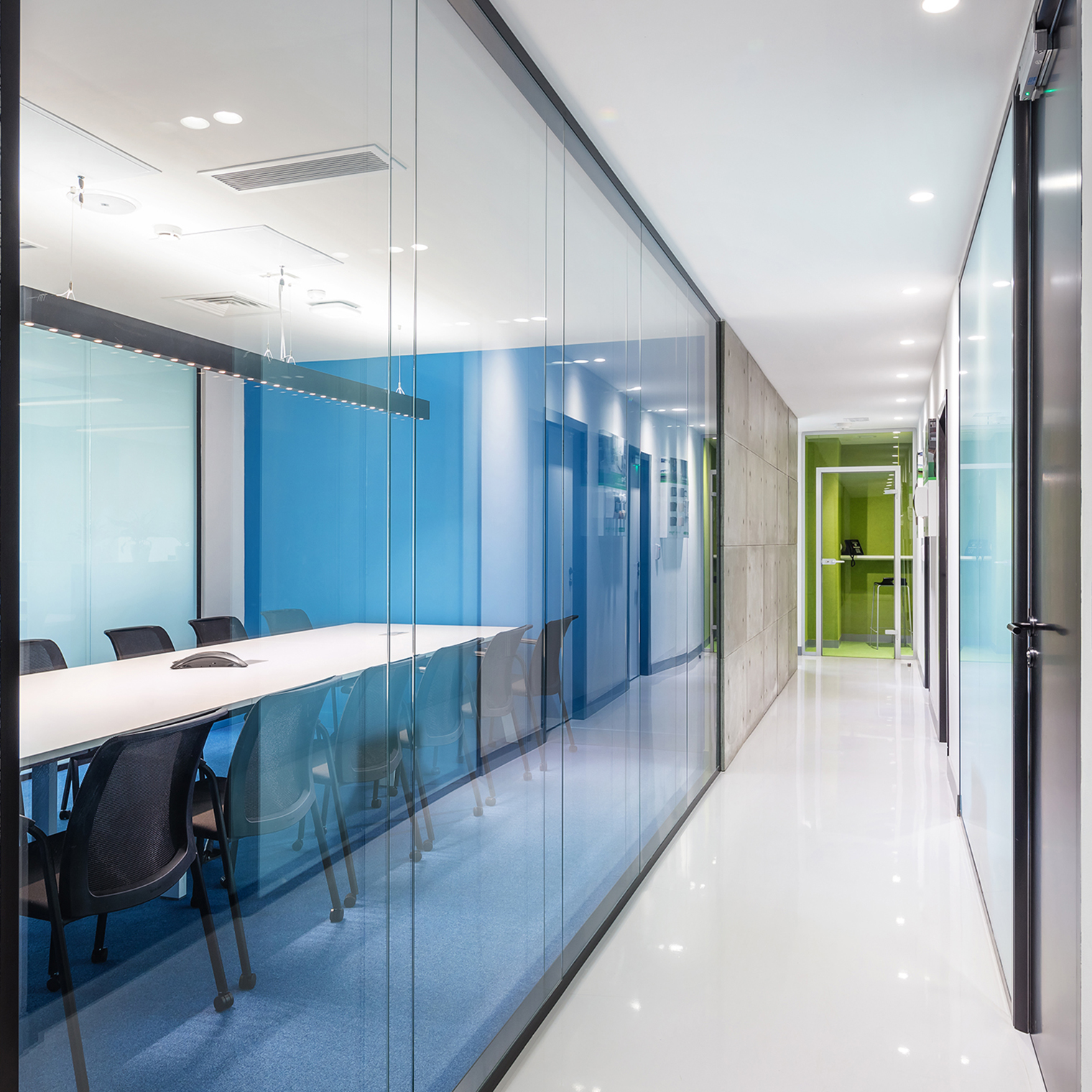
Based on this, as well as numerous other studies, a high number of interior designers use the last option in selecting colour solutions for office spaces. Light blue is the leading shade in interior design. It is responsible for the activation of the brain divisions responsible for the assimilation of new information and the establishment of business contacts. On the other hand, green, known for its positive effect on the central nervous system and relaxation of the eye muscles, can help to increase the productivity of workers who spend most of the day at their computers. It’s also an ideal choice for furnishing relaxation rooms.
If you depart from the most optimal neutral white lighting temperature, in rooms painted in these shades, and choose lighting in a more blue spectrum, it is important to know that this will emphasize the intensity and saturation of colours such as light blue and dark blue and will give green an emerald tone.
In addition to blue and green colours, yellow and beige are also adequate for most of the wall surfaces. Using bright colours for columns or walls in small rooms will make a difference and break up the feeling of boredom, but it isn’t recommended for use on the walls which have windows on it because of the strong contrast with natural light, especially if the wall is directly facing the employees. (Gordon, 1987, P.25) When we talk about yellow, we can say that it improves creativity, creates an optimistic and cheerful mood, and stimulates new ideas, but if you still choose a standard and neutral option, then beige is the perfect solution for you.
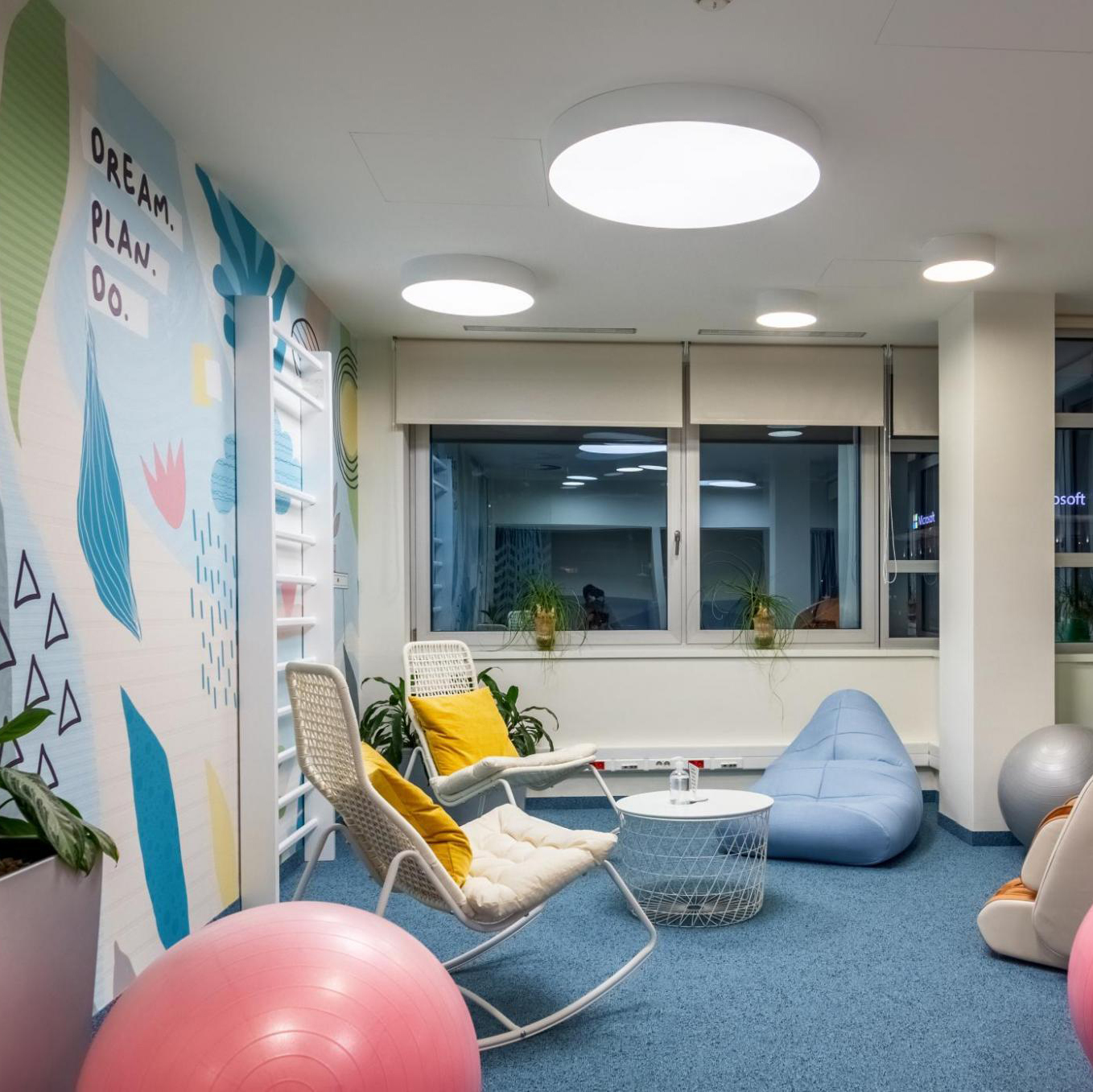
However, when we are talking about the warm tones of the interior, we should be careful how they are combined with the colour temperature of the lighting. As we have already said, it isn’t recommended to combine warm tones of the interior with cold lighting. Such a combination will lead to their fading, bringing the warm colour, such as orange, closer to brown, and yellow will take on a greenish hue. In this case, the safest choice of lighting colour is a neutral white option.
A carefully designed environment in which employees feel comfortable is a good basis for spreading a positive atmosphere in the workplace and increasing the desire for progress. It is very important to choose design solutions that will minimize all risk factors for employee health problems. When choosing the lighting, its temperature, and its intensity, we should pay particular attention to the purpose of the room itself, and the effect we want to achieve with it. By taking care of our employees, we also take care of our company, because their gratitude will be measured by the high level of productivity of the entire team.
